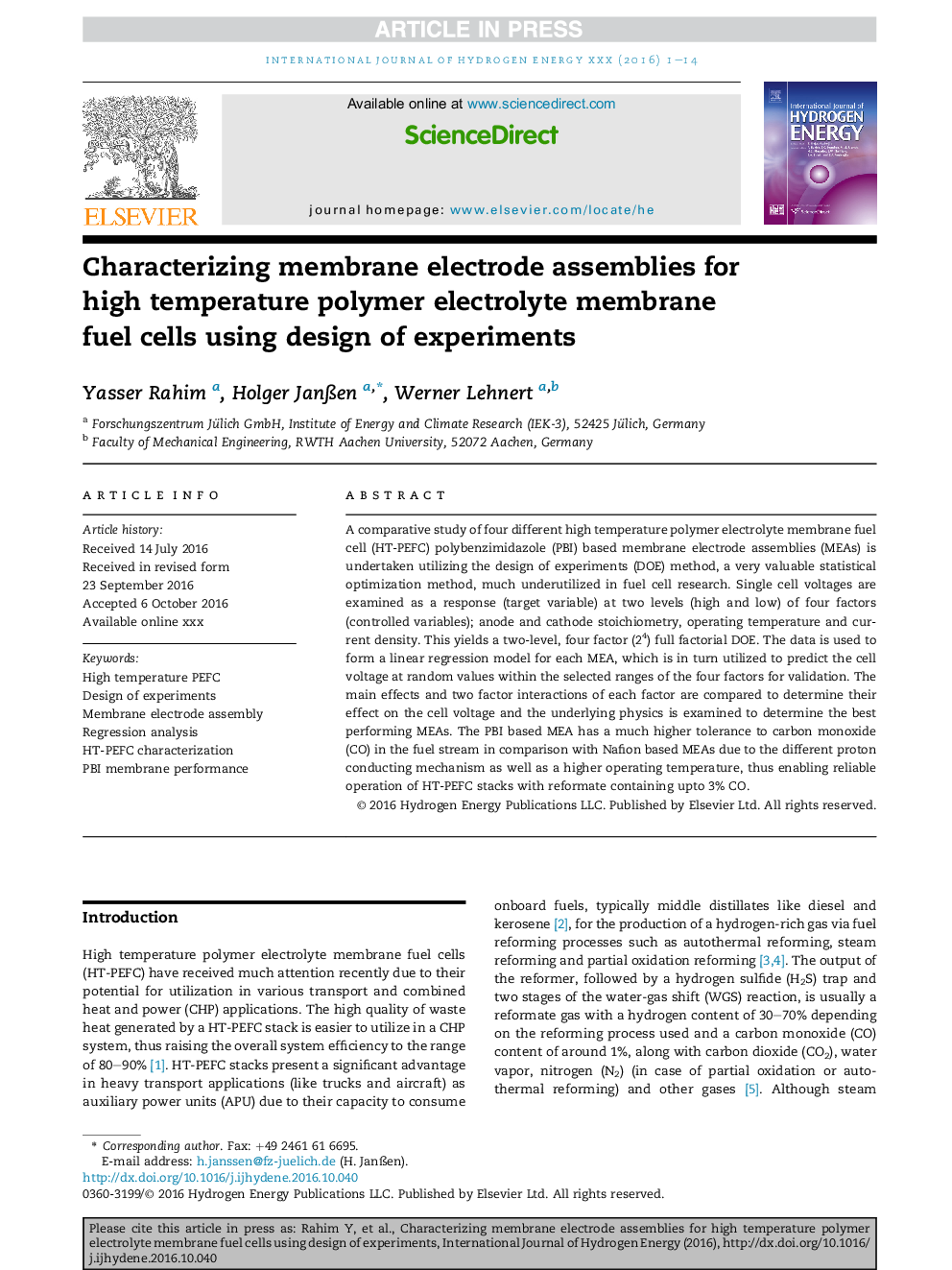| Article ID | Journal | Published Year | Pages | File Type |
|---|---|---|---|---|
| 5146723 | International Journal of Hydrogen Energy | 2017 | 14 Pages |
Abstract
A comparative study of four different high temperature polymer electrolyte membrane fuel cell (HT-PEFC) polybenzimidazole (PBI) based membrane electrode assemblies (MEAs) is undertaken utilizing the design of experiments (DOE) method, a very valuable statistical optimization method, much underutilized in fuel cell research. Single cell voltages are examined as a response (target variable) at two levels (high and low) of four factors (controlled variables); anode and cathode stoichiometry, operating temperature and current density. This yields a two-level, four factor (24) full factorial DOE. The data is used to form a linear regression model for each MEA, which is in turn utilized to predict the cell voltage at random values within the selected ranges of the four factors for validation. The main effects and two factor interactions of each factor are compared to determine their effect on the cell voltage and the underlying physics is examined to determine the best performing MEAs. The PBI based MEA has a much higher tolerance to carbon monoxide (CO) in the fuel stream in comparison with Nafion based MEAs due to the different proton conducting mechanism as well as a higher operating temperature, thus enabling reliable operation of HT-PEFC stacks with reformate containing upto 3% CO.
Related Topics
Physical Sciences and Engineering
Chemistry
Electrochemistry
Authors
Yasser Rahim, Holger JanÃen, Werner Lehnert,
